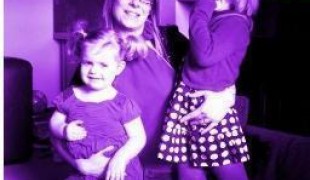- 12047
- 638
- 12
- 12
- 0
- Help Ukraine
About the solution
Tom, born in 1994, suffers from this disease since he was born. This patient can experience up to 24 epileptic seizures a day, often while he sleeps, and he has learning dificultes due to his condition.
Tom’s family was always worried about the seizures he has while he’s asleep. The device they had to keep him monitored was not very effective, and failed to detect every seizure.
That’s why Adrian and Chris team up, and founded their own company – Adris Technologies - developing PulseGuard, a wearable sensor worn by epilepsy patients that transmits the heart rate readings to an iPhone app. The invention works by shining a light through the skin, with a sensor detecting blood flow and recording accurately heart rate reading. When heart rate rises significantly, which happens before a fit, an alarm is sounded on a smartphone or iPad, meaning that people can reach out to the patient earlier.
“Every parent with an epileptic child with symptoms like Tom’s will know that life can be very stressful and a constant worry, especially from very disturbed and sleepless nights. We are therefore delighted to be able to try and help many other families using our experience and research by making our invention available to them", explained Tom’s father.
After getting the idea, the duo started emailing experts to get some help building the app. A neuro-scientist replied, and helped them for free.
It took the team two years to create the product and to make clinical trials.
More info: https://www.pulseguard.org/
Adapted from: http://bit.ly/2jX9GO7
What about you, do you have any solutions? Please share them with the Patient Innovation community!
This solution shall not include mention to the use of drugs, chemicals or biologicals (including food); invasive devices; offensive, commercial or inherently dangerous content. This solution was not medically validated. Proceed with caution! If you have any doubts, please consult with a health professional.
DISCLAIMER: This story was written by someone who is not the author of the solution, therefore please be advised that, although it was written with the utmost respect for the innovation and the innovator, there can be some incorrect statements. If you find any errors please contact the patient Innovation team via info@patient-innovation.com
-
-
240
-
0
-
2946

Richard Hanbury creates Sana Relief - a device to recovery from fatigue.
CAREGIVING
SLEEP FUNCTION: Resting
Neuromuscular Disorders
5 Senses support devices: (glasses, hearing aids, headphones...)
App (Including when connected with wearable)
Managing pain
Enhancing health literacy
Promoting self-management
Managing Neurological Disorders
Recovering from Traumatic Injuries
Enhancing Mental Health
Preventing (Vaccination, Protection, Falls, Research/Mapping)
Raise awareness
Caregiving Support
Child and Adolescent Psychiatry
General and Family Medicine
Neurology
Pediatrics
Physical Medicine and Rehabilitation
Psychiatry
United States
-
-
-
586
-
0
-
13445

Anti-suffocation pillow
SLEEP FUNCTION: Resting
CAREGIVING
VENTILATION
Epilepsy
Strategy/Tip
Assistive Daily Life Device (to help ADL)
Seizures
Improving respiratory function
Managing Neurological Disorders
Alleviating Allergies
Enhancing Mental Health
Preventing (Vaccination, Protection, Falls, Research/Mapping)
Caregiving Support
Neurology
Pediatrics
Pneumology
United Kingdom
-
-
-
459
-
0
-
8417

Epdetect – App to monitor epileptic people
-
 en
en